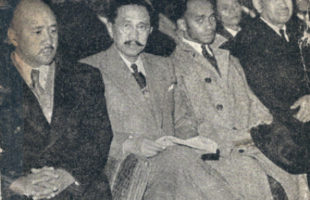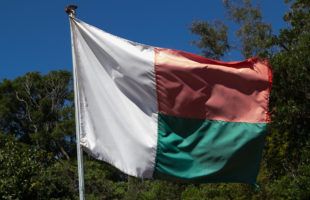In the late 17th century Madagascar became the epitome of piracy. The infamous republic of pirates, Libertalia, is said to have existed in the northeast of the island. Everything is said to have started with the pirate James Misson. He is said to have been a Frenchman from Provence. During a stay in Rome, Misson, disgusted by the decadence of …
LesenSecond world war – Operation Ironclad
Since the ceasefire of Compiègne in June 1940, wide parts of France, including the oversea territories and thus also the colony of Madagascar, were under German military administration with a French government in Vichy. This so-called Vichy government de facto owned Madagascar. Meanwhile, Japan had gained predominance in the Indian Ocean. The Germans planned to give Madagascar to the Japanese …
LesenMadagascar’s fight for independence
In 1946, Madagascar became part of the official oversea areas of France and thus part of this state. At that time, about 35.000 French people already lived in Madagascar. In the same year, the party “Mouvement démocratique de la rénovation malgache” (MDRM) was founded. This party advocated for Madagascar as an independent country inside the French Union and supported the …
LesenThe Franco-Hova wars – The beginning of the colonial rule
In december 1883, France invaded Madagascar with armies. As reason for the invasion, violation of Lambert charter, the letters of request by Radama II. to France and reconfiscation of the property of French citizens was stated. The discussion leading up to the attack was also influenced by the facts that France had occupied Mauritius in 1810 successfully, that French soldiers …
LesenThe last kings of the Merina people
In August 1861, Ranavalona I. died, and her then 32 years old son became the Merina king at last. During Ranavalonas I. reign, the Malagasy people was reduced from approximately five million to less than half. Lambert returned to Madagascar again to claim the rights he had gained by the Lambert charter. The king bestowed him those as promised, which …
LesenRanavalona’s I. reign of terror
In 1828, after the death of her husband, Queen Ranavalona I. came into power by killing all other potential regents (wives, sons, mothers). At that time, she was between 30 and 40 years old. Ranavalona I. went down in history rather ingloriously and bears the surname “the cruel”. Many Malagasy call her regency tany maizina, in English “years of darkness”. …
LesenAndrianampoinimerina, Madagascar’s most famous king
In 1787, Andrianampoinimerina (loosely translated “the king who is not like the stupid” or “the one, who will always stay in the Merina’s hearts”) was chosen by his father as successor to the throne of the Ambohimanga kingdom – that’s at least what legends tells. He was then 42 years old. Historians instead say that a grandson of Andrianjaka, prince …
LesenDevelopment and division of the Merina kingdom
After about twenty years, Andriantsimitoviaminandriandehibe died around 1670, and his oldest son Razakatsitakatrandriana came into power. He married two wives, Ravololontsimitovy from his father’s clan and Rafoloarivo from another clan, with whom he got four sons and six daughters. Whether it is by accident that both women share the names of his grandfather’s wives, or whether it might have been …
LesenThe beginning of the Merina kingdom
According to deliverance, the first king of the Merina people was Andrianerinerina (andrian = king, Nerinerina = his actual name). Legend tells he came from heaven and subdued the legendary Vazimba people, and later Merina came out of this first people. His regency was followed by the queens Andriananjavonana, Andrianamponga I., Andrianamboniravina, Andranolava, Rafandrandava, Ramasindohafandrana, Rafandrampohy and Rafandramenitra. Written evidence …
LesenMadagascar’s national flag
Madagascar’s national flag carries the colours white, red and green (white vertically in the left two fifths, red and green horizontally in the right three fifths of the flag). It was introduced on 21.10.1958 with Madagascar’s independence as the official national flag. It was preceded by a competition to create a new national flag. In 2009, the various proposals of …
Lesen MADAMAGAZINE Your Magazine about Madagascar
MADAMAGAZINE Your Magazine about Madagascar










